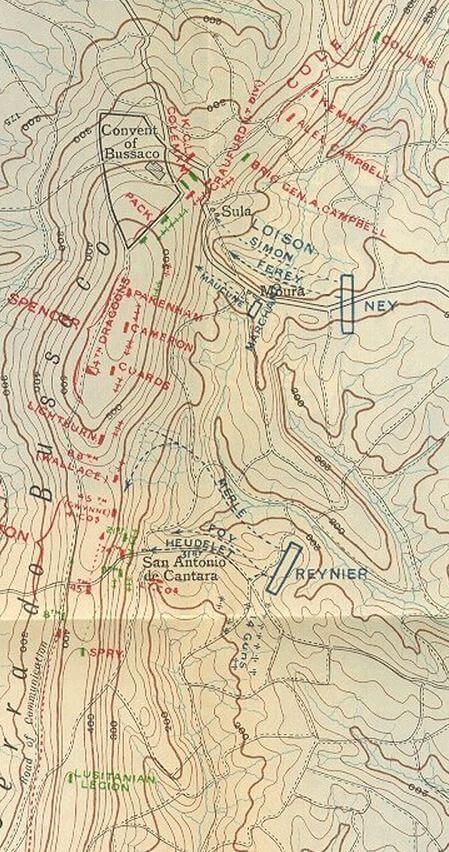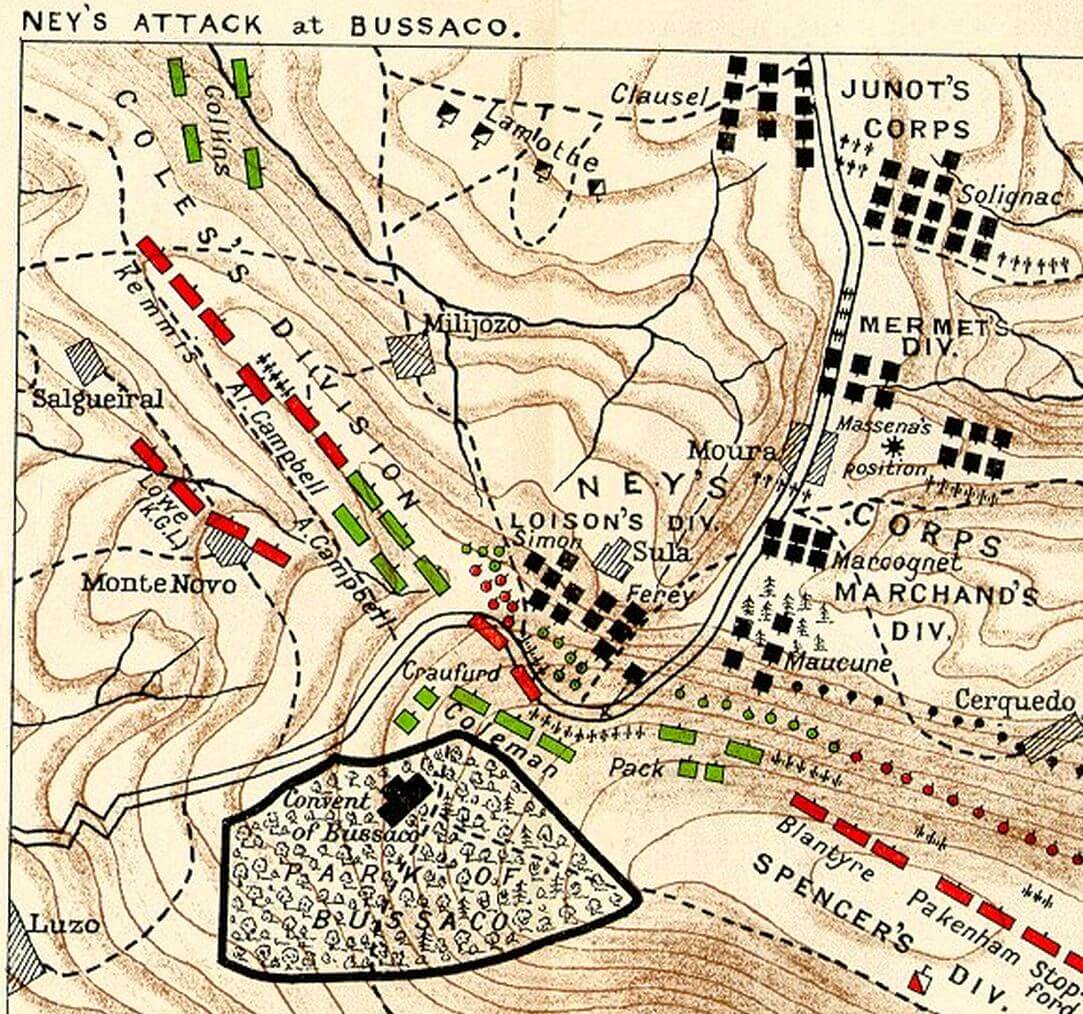(Re-posted from Margin of Victory: an in-depth look at board games)
Some Historical Background September 27th 1810:
Historical Background
Uncertain how his army of 50,000 troops, composed of equal portions British and Portuguese, would deal with another open clash with the larger French army, Wellington had deployed most of his forces on the reverse slope of Bussaco ridge and awaited attack.
Marshal Andre Massena did not let his uncertainty of the Allied position deter him from attacking. He planned a two-phase attack, first with Reynier’s Corps on what Massena believed was the British right flank, followed by Ney attacking the left after Reynier met with success.
Massena kept Junot’s corps in reserve, to exploit success wherever it happened. Reynier’s disjointed attacks were beaten back, but hearing the heavy gunfire, Ney assumed Reynier’s men were enjoying success and ordered his attack.
Just after 8am, Ney sent Loison’s and Marchand’s divisions against the British left. Loison’s Division forced back a stubborn enemy skirmish line and then advanced to capture a troublesome British battery.
Two concealed British light regiments (the 43rd and 52nd) awaited the French. As the French neared the battery, Crauford ordered these troops to stand and pour murderous volleys into Loison’s columns. Within minutes, Loison’s Division was streaming back down the hillside in full retreat.
Meanwhile Marchand’s Division had advanced to the foot of the ridge, but after several unsuccessful assaults up the hillside, Ney called off Marchand’s attack. Massena accepted the futility of making any further attempts to storm the ridge and withdrew. Massena’s cavalry subsequently found a road leading past Wellington’s army and when Massena advanced along it, Wellington resumed the retreat to the fortified Lines of Torres Vedras.
General Foy remarked:
“In the British army will not be found either the strong sympathy between the leaders and the soldiers, the paternal care of the captains, the simple manners of the subalterns, nor the affectionate fellow-feeling in danger and suffering which constituted the strength of the revolutionary armies of France; but unshaken patriotism, and tried and steady bravery, are to be met with everywhere amongst them.”
Last Saturday while our wives were out at the spa and our dad was watching his favorite grand-daughters, my brother and I sat down for a third time to play Commands & Colors: Napoleonics. Having played the first Bussaco scenario against Russ a week before, we immediately headed to the French right flank during the same battle and played Bussaco (Ney’s Assault). Mike once again took the British, and I sided with the French. The Allied forces have a fun mix of British and Portuguese line and light troops with some specialized units (like the Guards Grenadiers) mixed in. The French, meanwhile, have their usual assortment of line and light infantry.
Setup
As the scenario opens, the British have an advance skirmish line made up of Rifles, lights, and Portuguese light troops in the center, and their main force scattered in the rear. The French, on the other hand, have a nice set of intact lines. We cracked open a Flemish sour ale and started playing.

The start of the battle.
Early Battle
My first goal was to eliminate Sharpe’s Rifles in the town of Sula, as their superior range makes them a huge threat. In fact, their position means they can take shots at any Frenchmen advancing in the entire center section. So I quickly moved up some light and line infantry and whittled them down to one block strength. (Mike then wisely ordered them to retreat.)

First things first: Kill Sharpe!
That done, Mike and I traded some fire on French right flank. In the end, I withdrew my troops; the forest makes for a nice, safe approach, but the French still face some Portuguese troops sitting on a hill, and I just couldn’t get my artillery up fast enough. As Mike marshaled his forces, it was clear this was going to be decided in the center.
Mid Battle
As Mike worked to bring together a line in the center, I brought my left and center together to form a powerful, linked line of infantry. (Unbeknownst to my opponent, I was also building up an entire hand of left section cards, hoping to make a move on the Portuguese line infantry and British cavalry on that side, but it never panned out.)

My left center midway through the battle.
I anchored my left-center line in the town of Sula, and stretched my troops toward my own end of the map from there. Some of my units had taken a beating from the murderous musket fire of the British light troops, so I cycled weak units to the rear and brought fresh ones up. Meanwhile, Mike brought his line together and prepared to assault.
End of Battle
I’m proud to say that this one ended in total carnage. General Mike played a “Bayonet Charge” and sent his Allied troops howling forward. They did a bit of damage and destroyed one unit, but he couldn’t have known that I had an “Assault Center” up my sleeve.

After the Allies’ charge.
I laid the card down and ordered two full strength French line units, one 3/4 strength line unit, and one French light cavalry. They all engaged with the enemy infantry and wiped them out (3 banners). The cavalry achieved a breakthrough too, and managed to nab the last lone British light infantry block for the victory. 4 banners in one turn–wow! Mike was truly stunned; he had thought his charge might bring him within the grasp of victory, but, alas, it only hastened his defeat.

The map at the end. Mike’s “losing face” makes another appearance.
Despite the way this one ended, I think it is a rather balanced scenario. The French get the forests for a covered approach on both flanks, while the British have a lot of hills. The town in the center will inevitably become the heart of this battle, though, and it was definitely true on Saturday.
Stay tuned as my brother and I sit down to play the next scenario!
John,
Margin of Victory blog

